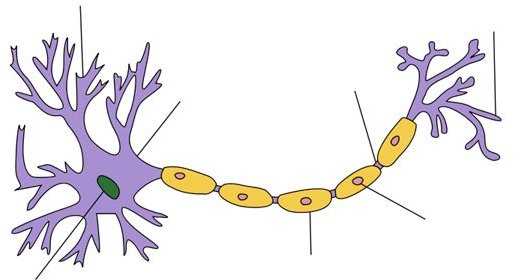How is ALD Inherited? A Look at the Genetics of Adrenoleukodystrophy
Cause of ALD
ALD symptoms are brought on by damage to the myelin sheath which is the protective covering of nerve cells in the central nervous system. The removal of myelin is brought on by the build up of very long chain fatty acids. A key enzyme is missing which usually breaks down these molecules.
Without an effective myelin sheath nerve cells in the brain do not conduct actions potentials which means they are unable to send signals to the muscles to contract. Symptoms of ALD vary depending on the age of onset which can occur in childhood or adulthood. ALD received prominence in the film Lorenzo’s Oil, where the parents of Lorenzo Odone, dissatisfied with the treatments available searched for their own.
The age of onset for children is between the ages of 2 and 10 and here the symptoms are the most severe. They include: -
- Poor memory
- Aggression
- Seizures
- Ataxia
- Learning disabilities
- Loss of vision
- Difficulty swallowing
- Abnormal behaviour
The adult onset form of ALD is usually milder and generally occurs between the ages of 21 and 35. Symptoms can include: -
- Weakness of paralysis of the lower limbs
- Progressive stiffness
- Ataxia
- Deterioration of brain function
ALD Inheritance
ALD is a sex-linked disease which means that the faulty gene is on one of the sex chromosomes (X female Y male). The defective gene is on the X chromosome and it is called ABCD1. It codes for a transporter protein that usually carries the enzyme that breaks down very long chain fatty acids. A faulty protein cannot transport the enzyme hence the build up of fatty acids.
Women are the unaffected carriers of the disease. The mutation lies on one of their X chromosomes, and they are protected from the effects of the disease because their other X chromosome does not have the mutation and so functions normally.
However, as men only possess one X chromosome they will contract ALD if the gene is passed to them by their mothers.
If a carrier woman has a boy with an unaffected man then there is a 50% likelihood of the boy having ALD.
If a carrier woman has a girl with an unaffected man then there is a 50% likelihood of the girl being a carrier of ALD. The girl may eventually show some symptoms, but she will not inherit the full-blown disease.
ALD and Autosomal Inheritance
There is also a form of ALD that follows an autosomal recessive pattern of inheritance. A number of genes have been implicated including PEX1, PEX5 AND PEX10.
An autosomal pattern of inheritance means that boys and girls are affected equally and both parents must be carriers for a child to contract the condition.
When two carriers have children there is a 25% chance that their children will have the condition, a 50% chance that they will be carriers and a 25% chance that they will be normal.
